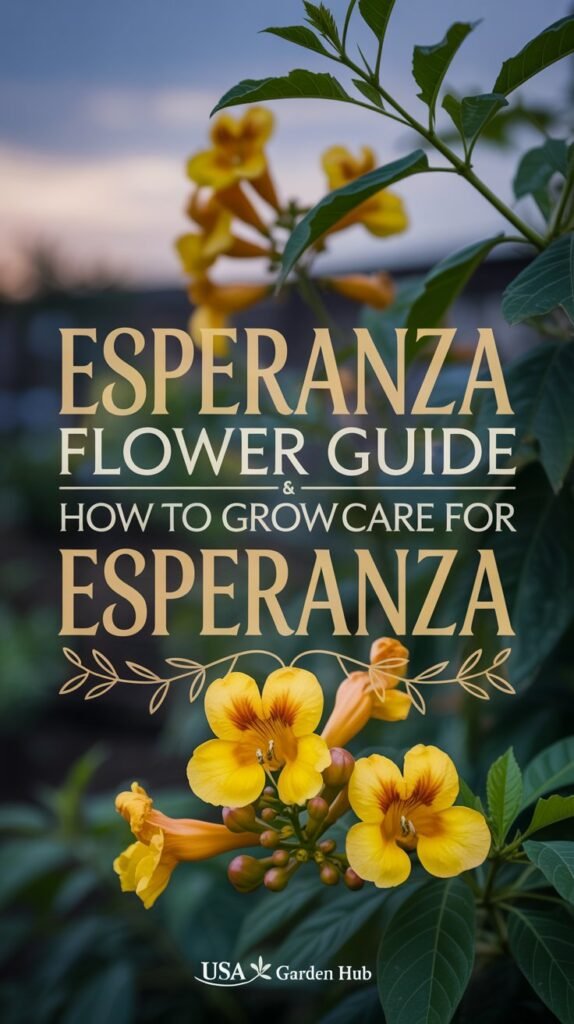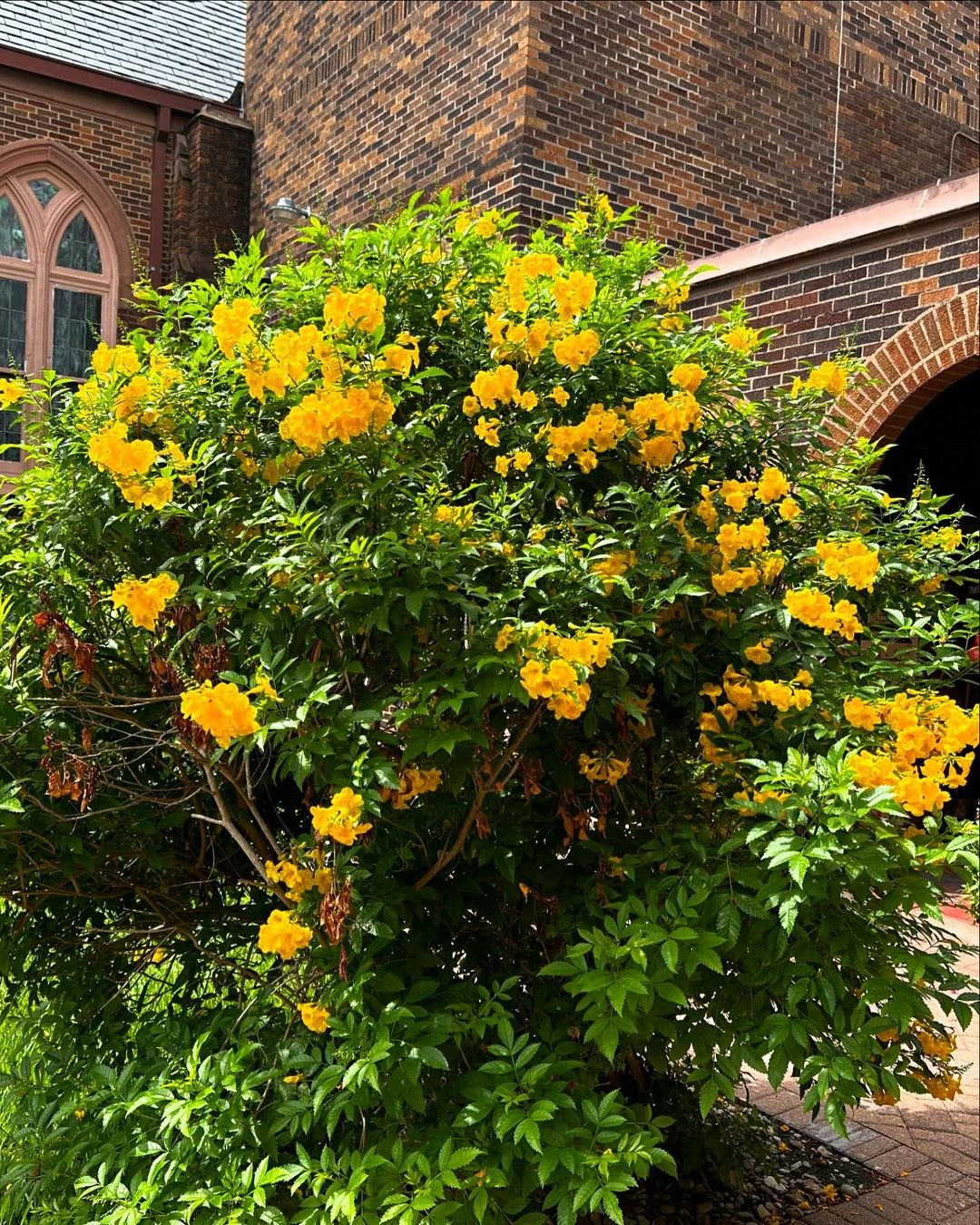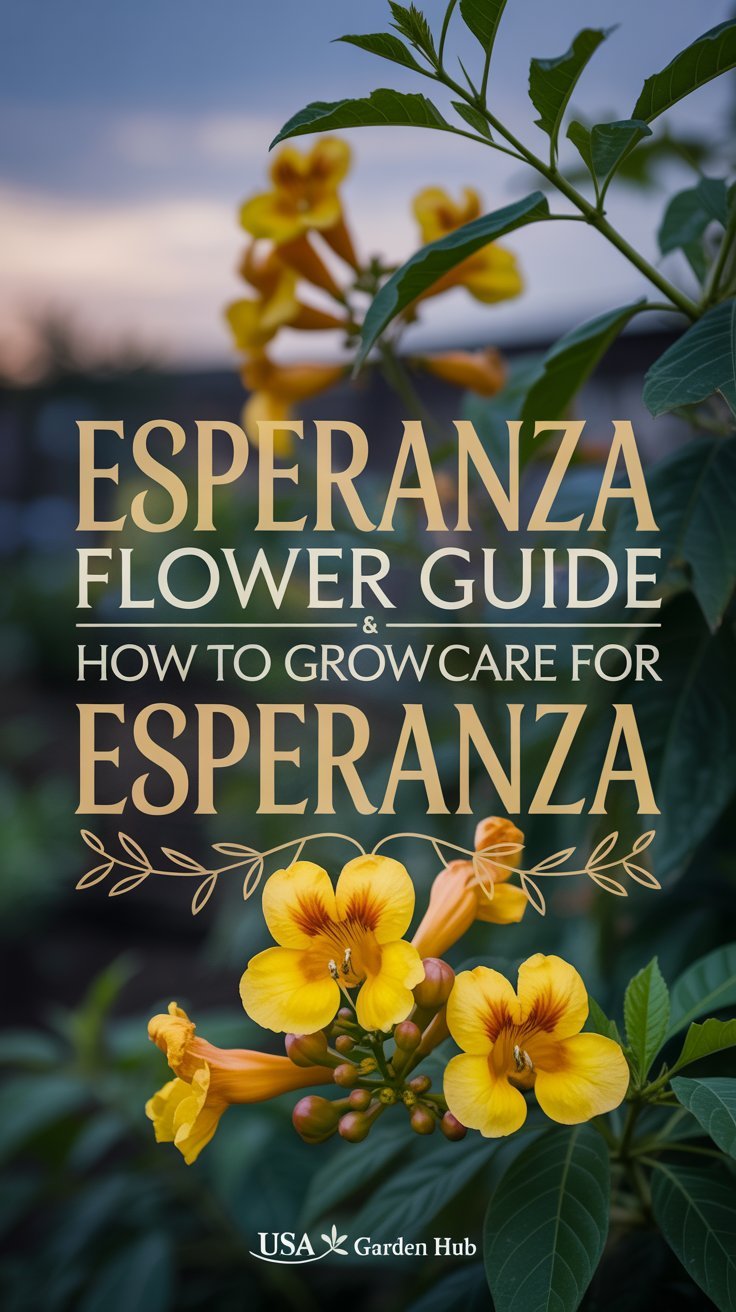Learn all about the Esperanza Flower, from its beautiful appearance to how to grow and care for it in your garden. Discover why this plant is a must-have for any gardening enthusiast.

Have you ever seen a flower that looks like a golden trumpet bursting with sunshine? That’s the Esperanza Flower, a breathtaking plant that can transform any garden into a vibrant paradise. As someone who’s been gardening for 10 years, I’ve fallen in love with this beauty, and I’m excited to share everything I’ve learned about it with you. Known scientifically as Tecoma stans, this yellow trumpet flower is native to the Americas, from the southern U.S. down to South America. Its name, “Esperanza,” means “hope” in Spanish, and trust me, it brings a hopeful glow to any outdoor space!
In this guide, I’ll walk you through what makes the Esperanza Flower so special, how to grow and care for it, its benefits, and answers to some common questions. Whether you’re a seasoned gardener or just starting out, this yellow flowering shrub Texas favorite is a must-have. Let’s dig in!
Characteristics and Appearance
| Category | Information |
|---|---|
| Botanical Name | Tecoma stans |
| Common Name | Esperanza, Yellow Bells, Yellow Elder |
| Plant Type | Perennial Shrub (often grown as an annual in cooler climates) |
| Hardiness Zone | 8-11 |
| Sun Exposure | Full Sun |
| Soil Type | Well-drained, Sandy or Loamy |
| Watering | Moderate, Drought Tolerant Once Established |
| Growth Habit | Upright, Bushy |
| Height/Spread | 3-10 feet tall / 3-4 feet wide |
| Special Features | Bright Yellow Trumpet-Shaped Flowers, Attracts Hummingbirds and Butterflies, Drought Tolerant, Long Blooming Season |
The Esperanza Flower is a showstopper. Imagine clusters of bright, golden-yellow blooms shaped like trumpets, dangling from a shrub that can grow anywhere from 3 to 10 feet tall, depending on how you care for it. The leaves are dark green, serrated, and lush, creating a perfect backdrop for those vivid flowers. Some varieties, like the Esperanza Goldstar, have even more compact growth and extra-long blooming periods, making them ideal for smaller gardens.
What I love most is how it blooms from spring all the way through fall in warm climates. In my garden, I’ve noticed the flowers attract hummingbirds and butterflies like magnets—it’s like hosting a nature party! There’s also a subtle fragrance that wafts through the air on warm evenings, adding a touch of magic.
Growing and Caring for Esperanza Flower

Growing the Esperanza Flower isn’t as tricky as you might think, especially if you’ve got some gardening basics under your belt. Here’s how I’ve made it thrive over the years:
Soil Requirements
This esperanza shrub loves well-draining soil. I’ve found that mixing in some sand or compost works wonders if your yard has heavy clay. Aim for a slightly acidic to neutral pH—nothing too fussy. One time, I planted it in a spot with poor drainage, and let’s just say it wasn’t happy until I fixed the soil!
Watering Needs
When it’s young, keep the soil moist but not soggy. Once established, the Esperanza Flower is drought-tolerant, which is a lifesaver in hot summers. I water mine deeply once a week during dry spells, and it bounces back with those gorgeous blooms every time.
Sunlight Requirements
Full sun is the key—think 6 to 8 hours a day. This yellow trumpet flower plant soaks up rays like it’s on vacation. I’ve tried it in partial shade, and while it survived, the blooms weren’t nearly as plentiful.
Pruning and Maintenance
Pruning keeps it looking tidy and encourages more flowers. I cut mine back in late winter or early spring, trimming about a third of the growth. It grows fast, so don’t be shy with the shears. Oh, and watch out for legginess—pinching back tips in summer helps it stay bushy.
Pest and Disease Control
Luckily, the Esperanza Flower is pretty tough. I’ve only dealt with aphids once, and a quick spray of soapy water took care of them. Good airflow and avoiding overwatering keep fungal issues at bay.
For more tips on growing hardy shrubs, check out my article on Top 10 Flowering Shrubs for Your Garden!
Benefits and Uses
Why should you plant an Esperanza Flower? Let me count the ways:
Aesthetic Appeal
Those yellow trumpet flowers are pure eye candy. I planted mine near my patio, and it’s the first thing guests notice. It’s perfect for borders, hedges, or even as a standalone focal point.
Attracting Pollinators
Hummingbirds and butterflies flock to it, making my garden a buzzing ecosystem. Pair it with other pollinator-friendly plants—see my guide on How to Attract Pollinators to Your Garden—and you’ve got a wildlife haven.
Medicinal Properties
In some cultures, parts of the Esperanza Flower are used traditionally for teas or remedies, though I stick to admiring its beauty. Always consult a pro before trying this at home!
Landscaping Uses
Whether you’re in Texas or beyond, this yellow flowering shrub Texas star shines in xeriscaping or sunny beds. Its heat tolerance makes it a go-to for low-maintenance designs.
Common Questions and Answers
Here are some questions I’ve heard (and asked myself) about the Esperanza Flower, optimized for quick answers you might hear on a voice search:
Is the Esperanza Flower Easy to Grow?
Yes! With full sun, well-draining soil, and occasional watering, it’s low-fuss once established. Perfect for busy gardeners like me.
Can It Survive in Cold Climates?
It’s hardy in USDA zones 8-11, so it loves warmth. In colder areas, I’ve grown it as an annual or brought it indoors during winter—it’s worth the effort!
How Often Should I Water It?
Water young plants weekly until rooted. After that, once every 7-10 days in dry weather does the trick.
Does It Attract Pests?
Rarely. Aphids might pop up, but they’re easy to manage with a natural spray.
How Big Does It Get?
Typically 3-6 feet, though it can reach 10 feet with ideal conditions. Pruning keeps it in check.
For more detailed info, the USDA Plant Database is a goldmine. I also recommend checking out resources from Texas A&M AgriLife Extension, University of Florida IFAS, Missouri Botanical Garden, and NC State Extension.
Conclusion
The Esperanza Flower is more than just a plant—it’s a burst of hope and beauty that’s won my heart after a decade of gardening. From its yellow trumpet flower blooms to its easy-care nature, it’s a standout in any yard. Whether you’re in Texas enjoying it as a yellow flowering shrub Texas staple or growing it elsewhere, it’s a rewarding addition. So, grab your trowel and give it a try—I promise you won’t regret it!







One comment on “Esperanza Flower: A Guide to Growing and Caring for This Stunning Plant”